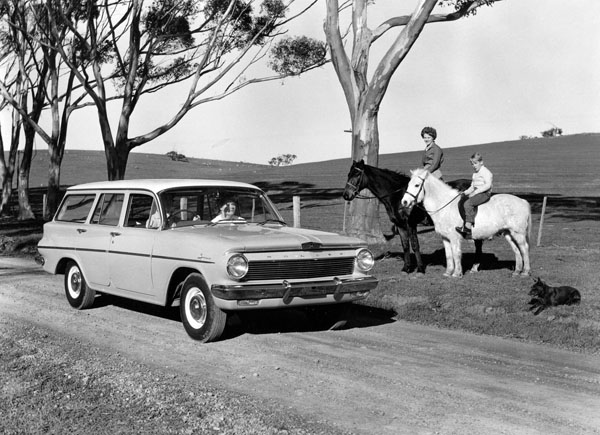
The EJ Holden saw the introduction of the ‘Premier’ optioned version of the Station Sedan and the introduction of two completely new six-cylinder engines. The first of these was rated at 100 hp with a 149 cubic inch capacity and a 33 per cent increase in power over the previous engine and the other a 115 hp engine with a 179 cubic inch capacity developing 53% more power. Not only did these new engines provide more power, but due to their newly designed combustion chambers and an 8.8:1 compression ratio coupled with a change in rear axle design employing higher ratios and a new Bendix-Stromberg single-barrel down-draft-type carburettor, petrol economy was improved.
These new engines were of the over square design with lower piston speeds and a seven-bearing crankshaft and had hydraulic valve lifters which did not require periodic adjustment and were much quieter. The oil pump was moved to outside of the engine block and the disposable type full-flow oil filter meant oil changes were needed only at 6500 km intervals. Engine timing was made easier by the addition of a new timing gear cover. The 149 and 179 metal flag badges which were fitted to these cars to distinguish the different engined models soon became prey to hoodlums who prised them off to adorn belt buckles and caused many owners to resort to a cheaper sticker to cover the missing badge’s vacant holes.
In the 60s cars were fairly spartan and much was made of improvements which today are taken for granted. Items such as a ‘modified windscreen zone’ in front of the driver to improve visibility in the event of a broken windscreen and electric two-speed windscreen wipers that did not vary in speed according to engine speed where promoted as significant advances in the ‘EJ’. Even improved drum brakes and the addition of an ‘accessories’ position to the ignition switch were considered significant improvements in their time.
Suspension comprised independent front wheel coil springing with short and long arms, a stabiliser bar and semi-elliptic rear springs. Sedans had only four leaves but Station Sedans scored an additional leaf. Direct acting shock absorbers were fitted at both front and rear. Recirculating ball steering was used with a ratio of 16.8:1 with a resultant turning circle of 36.5 feet. Tubeless 6.40 x 13.4-ply tyres were standard with six ply tyres an optional cost extra for Station Sedans.
Three sedan models were offered: Standard, Special and Premier model. Station Sedans also came in the same three flavours, the Premier Station Sedan being a new introduction with top grained leather upholstery and all the other luxury features of the Premier range.








